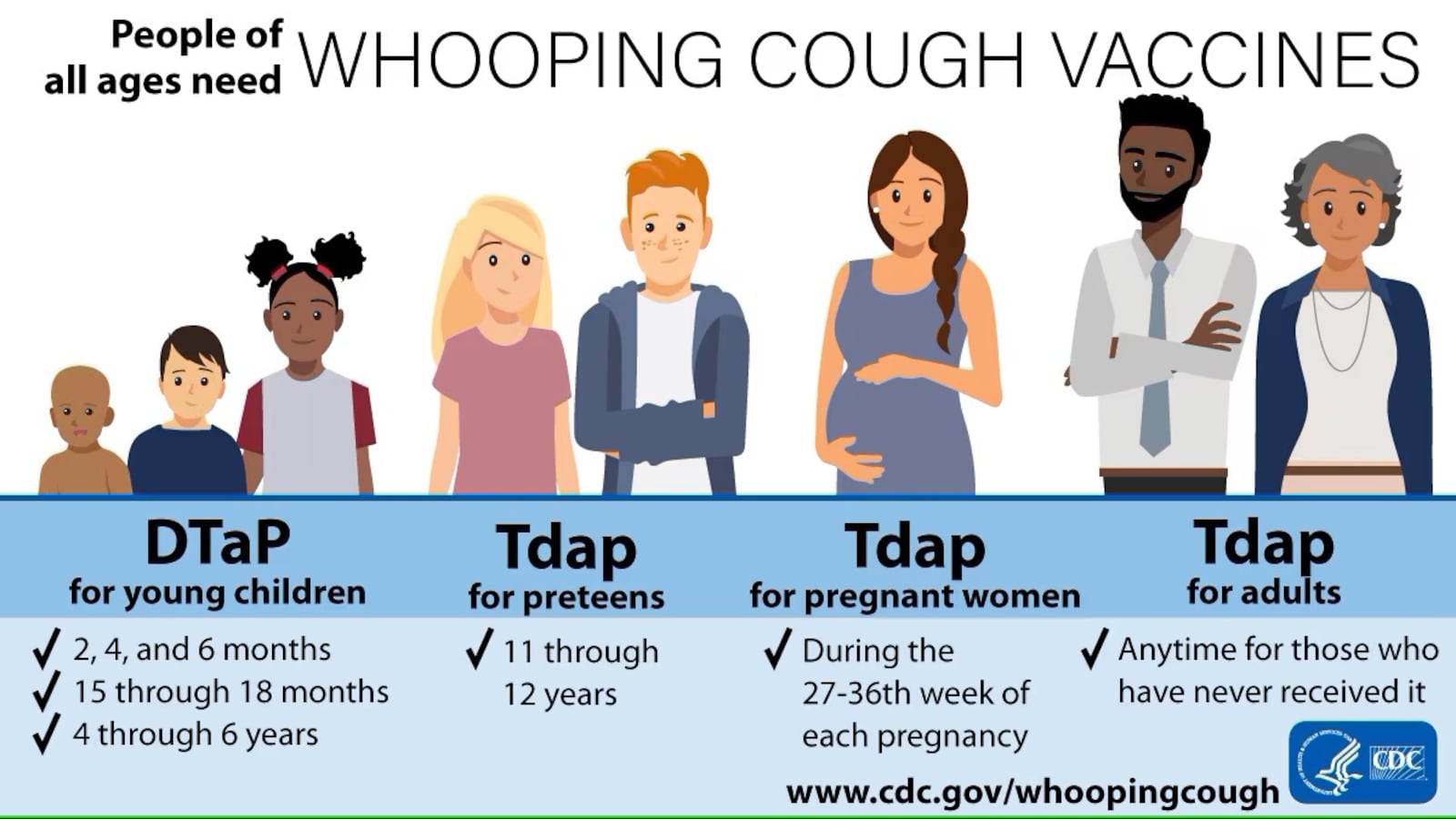“We have been seeing increased numbers of patients with the infection due to Mycoplasma pneumoniae, which is the bacteria that causes walking pneumonia,” said Dr. Michael Klatte, chief of pediatric infectious disease at Dayton Children’s Hospital.
It’s not limited to the Dayton area, he said.
“Similar to the cases of whooping cough, this is a trend that’s being seen in children’s hospitals all throughout the country,” Klatte said.
The impact of COVID
Families are continuing to feel the downstream effects of the COVID-19 pandemic. Doctors speculate that one of the reasons for increased cases of walking pneumonia and whooping cough is diminished immunity caused by the use of face masks and social distancing during the pandemic.
Walking pneumonia periodically becomes more prominent every three to seven years, Klatte said, and doctors think COVID interrupted that pattern.
“One of the thoughts among national experts is that with the COVID pandemic and all of the mitigation practices, masking and distancing that disrupted the normal circulation pattern of Mycoplasma pneumoniae,” Klatte said.
Treating walking pneumonia
There is no vaccine specifically for walking pneumonia, but it can be treated with certain antibiotics. Macrolides, a class of antibiotics, are the first-line treatment for this infection. Some first-line antibiotics used to treat pneumonia, like penicillin, will not treat the type of bacteria found in walking pneumonia, the CDC says.
When it seems like a cold is lasting longer than seven to 10 days, especially if a cough is getting worse or not going away, it could be walking pneumonia, Dayton Children’s says. Symptoms can come on suddenly or take longer to start. The symptoms are often mild, but sometimes can be more severe.
“The cough can last for up to three to four weeks,” Klatte said.
Other symptoms include a fever, fatigue, headache, chills, sore throat, other cold or flu-like symptoms, fast breathing or breathing with grunting or wheezing sounds, and/or labored breathing that makes the rib muscles retract.
Whooping cough hitting Montgomery County hard
Whooping cough, also known as pertussis, has been spreading throughout Ohio and locally, particularly in Montgomery County and after the start of school.
“Whooping cough in infants can be devastating,” Klatte said.
The disease can cause babies to stop breathing.
Since the start of the year, there have been 1,013 cases in Ohio, according to the Ohio Department of Health. Almost half, or 457 cases, have been diagnosed since the middle of August, around the start of classes for many school districts.
Montgomery County has had 250 reported cases of whooping cough this year, with about 161 cases reported since the week of Aug. 19, according to Public Health - Dayton and Montgomery County.
Of the 250 cases, there has been six hospitalizations and no deaths, as of the week of Oct. 21. Cases included 164 individuals, or 66%, who attend school, and 25 cases were in children in daycare, according to Public Health data. The largest age group was youth between the ages of 13 and 17, which accounted for 34.8% of the cases.
| Age groups | Cases | Percentages out of the total cases |
|---|---|---|
| <1 year olds | 15 | 6.0% |
| 1-3 year olds | 30 | 12.0% |
| 4-6 year olds | 39 | 15.6% |
| 7-12 year olds | 61 | 24.4% |
| 13-17 year olds | 87 | 34.8% |
| 18 and older | 18 | 7.2% |
Other local cases include 33 in Butler County, five in Champaign County, 18 in Clark County, 62 in Greene County, 21 in Miami County, nine in Preble County and 53 in Warren County, according to ODH.
Like walking pneumonia, doctors saw cases of whooping cough decrease during COVID.
“Since then, we’ve seen the numbers increasing for all of our respiratory infections,” said Dr. Becky Thomas, medical director for Public Health - Dayton and Montgomery County.
Those increases are partly due to people congregating without adhering to the same mitigation practices people were doing during the pandemic, she said, in addition to people not keeping up on their vaccinations.
“We’ve seen increased numbers in all of our vaccine-preventable diseases, including chicken pox and whooping cough, as well as cases of measles,” Thomas said.
The best protection against whooping cough is to get vaccinated, she said.
Two vaccines in the U.S. help prevent whooping cough: DTaP and Tdap. These vaccines also provide protection against tetanus and diphtheria.
DTaP and Tdap are part of the routine childhood immunization schedule, the CDC says. Pregnant women should also get the vaccine during each pregnancy between the 27th through 36th week of pregnancy, doctors say, in order to pass that immunity on to the child.
Symptoms of whooping cough and when to seek care
Early symptoms of whooping cough can last for one to two weeks and usually include:
- Runny or stuffed-up nose
- Low-grade fever (less than 100.4°F)
- Mild, occasional cough (babies do not do this)
- Apnea (life-threatening pauses in breathing) and cyanosis (turning blue or purple) in babies and young children
See a doctor if you or your child are:
- Struggling to breathe
- Turning blue or purple
- Coughing violently
- Coughing rapidly, over and over
- Not drinking enough fluids
Any time someone is struggling to breathe, it is important to get them to a doctor right away.
For more resources on where to get vaccinated, visit hhs.gov/immunization/get-vaccinated/where/index.html.
About the Author


